I previously included Pokémon Trading Card Game for Game Boy Color, which was first released in North America in 2000 after having been released in Japan in 1998, on my list of the twelve games that had left the biggest impression on me. As the name of the title suggests, it is a video game adaptation of the Pokémon Trading Card Game. Save for its coin flip AI being almost as cheap as the AI in the original Mario Party for Nintendo 64, it is an excellent game that holds up well. I decided to start a new game using the Lemuroid emulator on my LineageOS-powered Pixel 3a XL phone (which is no longer my primary “phone”). It was then that I remembered one thing I personally do not like about starting a new game in one of my favorite games.
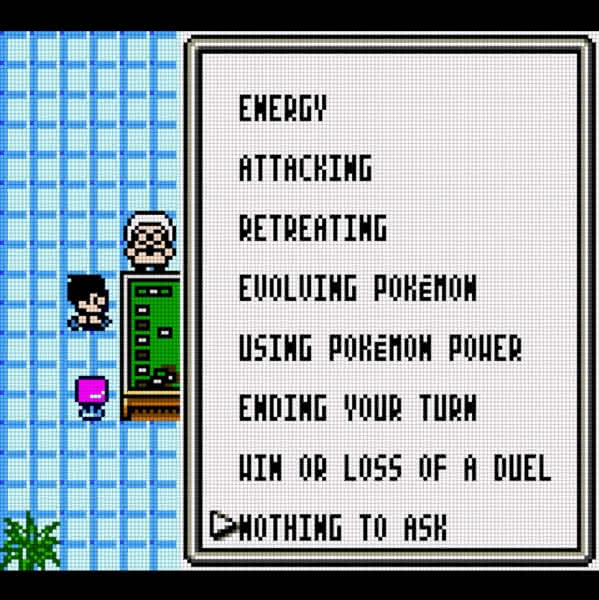
The non-skippable tutorial which follows selecting “Nothing to Ask” in the above screenshot.
IF YOU DON’T DO AS I SAY, WE WON’T BE ABLE TO PROCEED.
DR. MASON
The tutorial takes the form of a brief practice match wherein the player has to follow the in-game Pokémon card professor’s (Dr. Mason’s) instructions. It is actually a good tutorial which (A) explains the major concepts of the card game and (B) shows how the game works on Game Boy Color. The tutorial is necessary because there were far more kids who collected Pokémon cards than who actually knew how to play the Pokémon card game. I have but one complaint with the tutorial.
It is mandatory.
While the tutorial was a necessary addition to the game, it should be skippable . For example, I know how to play Pokémon Trading Card Game (with the older cards, at least – I am at least two decades behind these days) and have beaten its Game Boy Color adaptation multiple times. I do not need the tutorial. I would rather get straight into the game. Unfortunately, the trading card professor (PhD I’m sure) will not countenance my objections. I must not only undertake the tutorial, I must also obey.
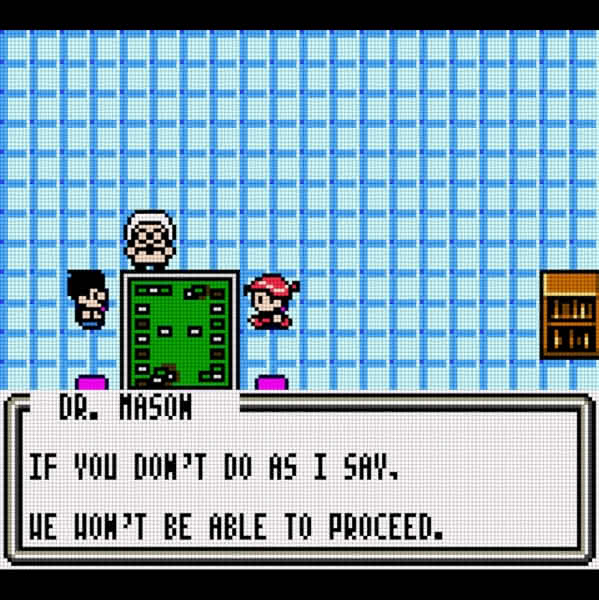
IF YOU DON’T DO AS I SAY, WE WON’T BE ABLE TO PROCEED.
DR. MASON
One thing I dislike more than being forced to do a tutorial for a game I have already beaten on multiple occasions is being told what to do in the tutorial. Think about all the terrible 1990s-era English-language localizations of Japanese games. They butchered so many games but here in this tutorial segment they failed to take into account that this is America and we like freedom (save the tutorial dictatorship for Canada).
I vaguely remembered a couple of points where it is possible to fight back against Dr. Mason’s tyranny, so I decided to do an in-depth look for The New Leaf Journal.
The tutorial is scripted from beginning to end. It always involves the same cards and same steps. We begin the practice match like every match by drawing an initial hand of 7 cards from our deck of 60 (each player has a separate deck of 60 cards). After seeing our hand, Dr. Mason gives us an order:
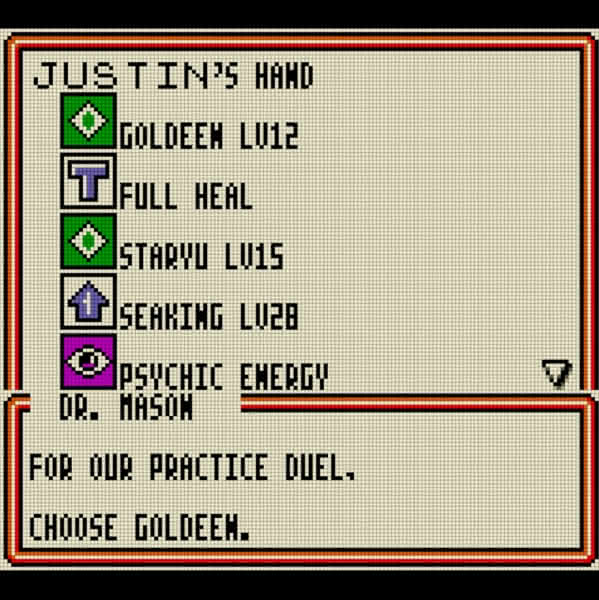
In the Pokémon Trading Card Game, the player is initially required to play at least one base – meaning roughly un-evolved for our instant discussion – Pokémon. In the screenshot, you can see that our hand has three Pokémon – Goldeen, Staryu, and Seaking. Of the three, two of these Pokémon – Goldeen and Staryu – are un-evolved base Pokémon. Seaking is the evolution card for Goldeen, so it cannot be played on the first turn. If this were a normal game, we would be permitted to play either Goldeen or Staryu. However, Dr. Mason, donning the cloak of a King, decrees that we must play Goldeen.
I knew for a fact that in a real game the dual with Machop can be won by initially playing Staryu instead of Goldeen. So I decided to take a stand.
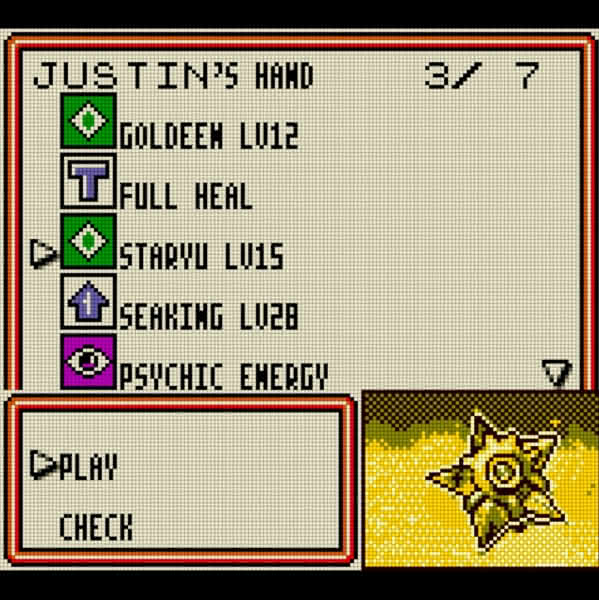
You’re not the boss of me, Dr. Mason!
Alas, Dr. Mason disagreed.
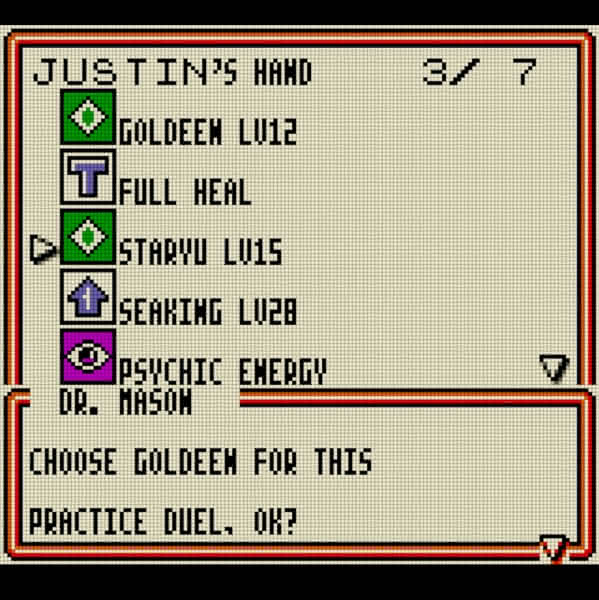
Having no choice, I acquiesced and made Goldeen my active Pokémon. After we set our active Pokémon, a virtual coin is flipped to determine who plays first.
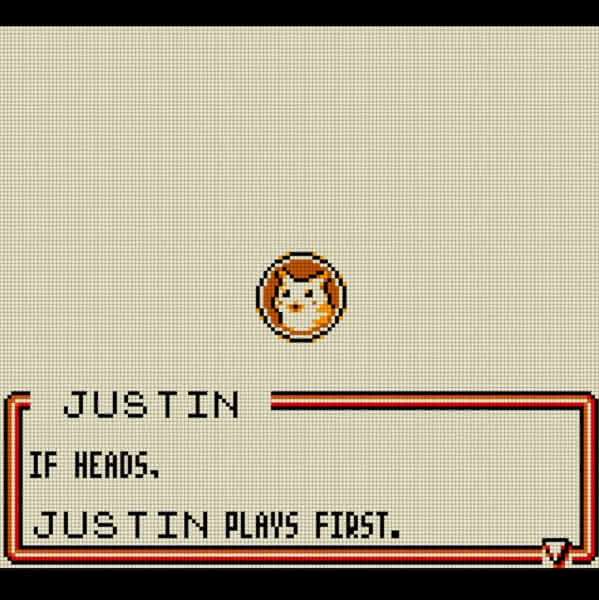
This coin flip has nothing to do with Dr. Mason’s power trip. I include it only to note that the tutorial is misleading. I get to go first? That is nonsense. You never win coin flips when they matter. I say this as someone who recalls losing seven in a row.
But I digress. Back to the tyrant.
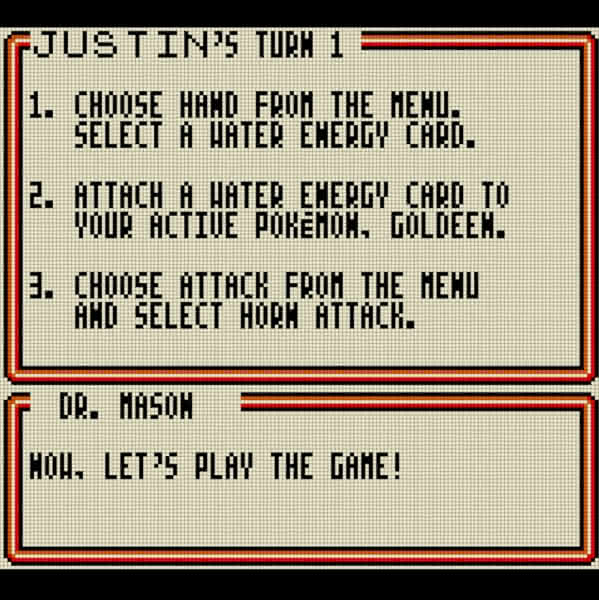
Dr. Mason gives very detailed instructions for each turn. I will give readers a little bit of context here since I assume that most people who find this article are not familiar with the ins and outs of the Pokémon Trading Card game. Pokémon are powered by “energy cards” which typically correspond to different elements. As a general matter, the player can attach one energy card to one Pokémon per turn. Goldeen is a water-type Pokémon and its sole, terrible attack, requires a single water energy card. Having forced me to play Goldeen instead of Staryu (Staryu is on our practice match bench), I did not find Dr. Mason’s turn one orders to be objectionable in and of themselves, so I followed his orders of my own free will, putting off my libertarian moment for a future turn. That turn would come on turn two:
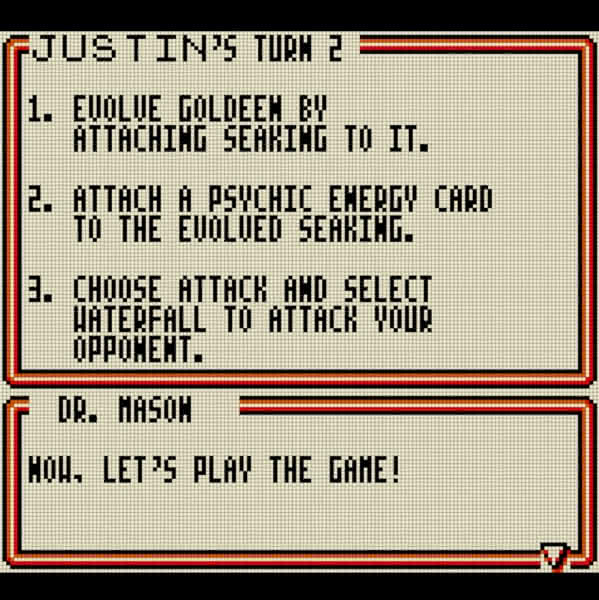
After I and my practice opponent exchanged attacks on the first turn, Dr. Mason wants us to evolve our Goldeen into Seaking (recall we had the Seaking card in our initial hand) and then attach a psychic energy card to Seaking, which, when combined with the water energy card we attached to Goldeen in turn one, allows Seaking to use its “Waterfall” attack. Here I decided to take a stand. Waterfall requires one water energy and one colorless energy. Colorless energy requirements can be fulfilled with any energy type. Why was Dr. Mason demanding that I use a Psychic energy card? Who does he think he is? I also had a water energy card in my hand, and so I defiantly decided to give that to Seaking instead.
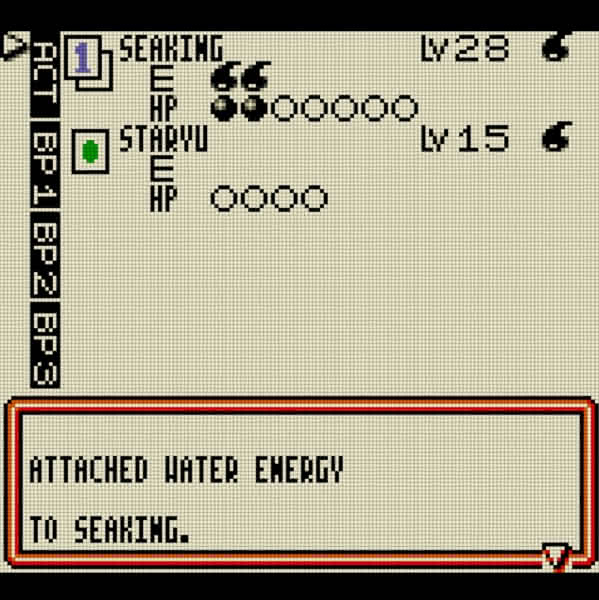
Dr. Mason allowed me to attach the water energy card to Seaking. However, he proved to be less than a free[dom] Mason when he then refused to let me actually use Seaking’s waterfall attack.
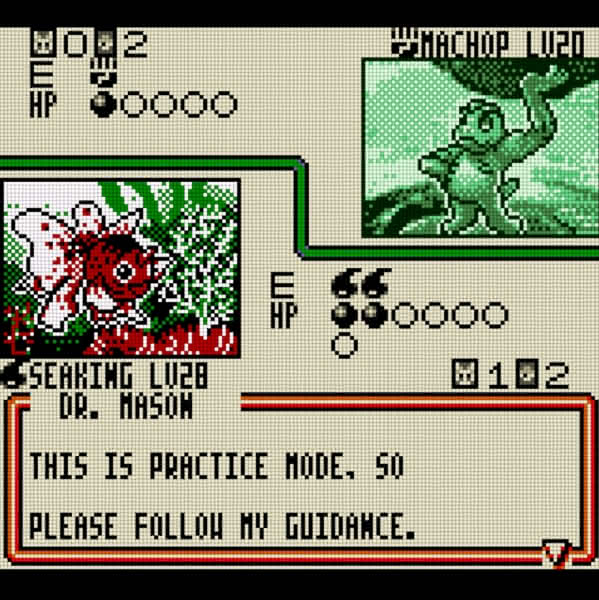
We learn something interesting here. Dr. Mason allows us to do whatever we want until we want to execute an action that will end the turn. There are two ways to end a turn. Either we can use an attack or we can check the end turn option without attacking. Similarly, had I on turn 1 attached a water energy to my benched Staryu instead of my active Goldeen, I would have been prevented from progressing when I ended the turn instead of when I attached the energy card. Having no choice, I retreated and attached a psychic energy card to Seaking on the re-do and executed its Waterfall attack.
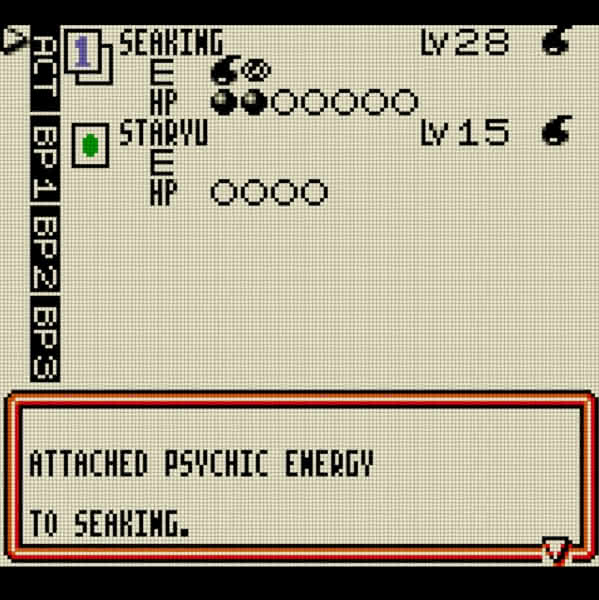
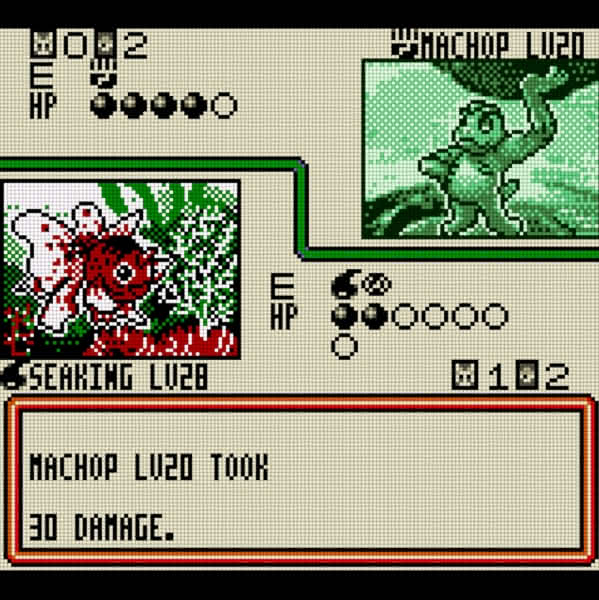
The opposing Machop started with 50 hit points (health). Goldeen’s horn attack on turn 1 did 10 damage and Seaking’s waterfall on turn 2 did 30 damage. This means that Machop now has only 10 health left – which is significant to understanding Imperator Mason’s third turn orders.
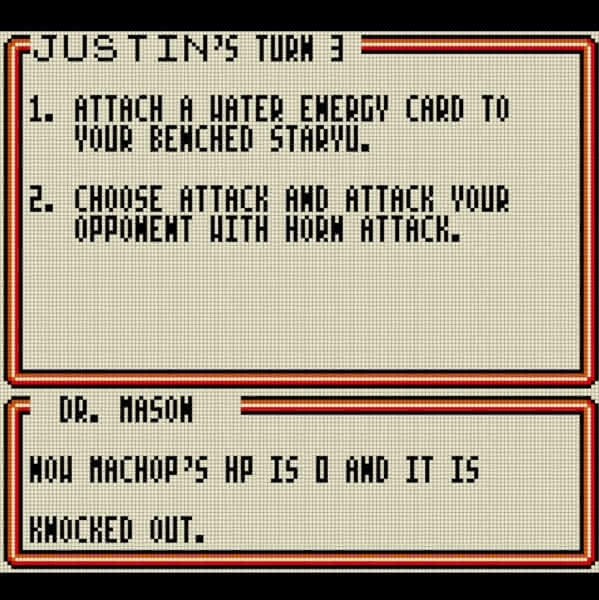
The first step is uncontroversial. He wants us to attach a water energy card to our benched Pokémon, Staryu, so that it will be prepared for action later in the battle. The second instruction is interesting. Dr. Mason orders us to use Horn Attack to attack Machop. Seaking has two attacks. Horn Attack does 10 damage for a single water energy card and, as we saw on the previous turn, Waterfall does 30 damage for one water energy card and one colorless energy.
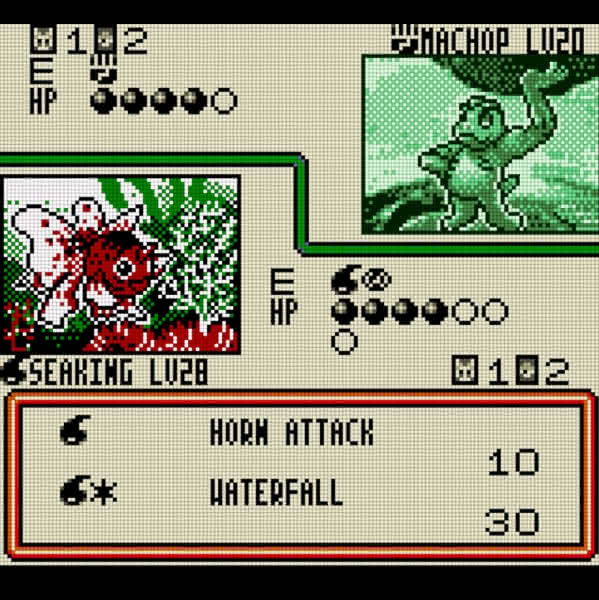
Because Machop only has 10 hit points left, it does not matter which attack we use – Machop will be knocked out either way. Moreover, both Horn Attack and Waterfall are normal, damage-dealing attacks with no additional effects (e.g., some Pokémon have attacks that require the player to discard an energy card). I decided to see if I could defy Dr. Mason by using Waterfall instead of Horn Attack.
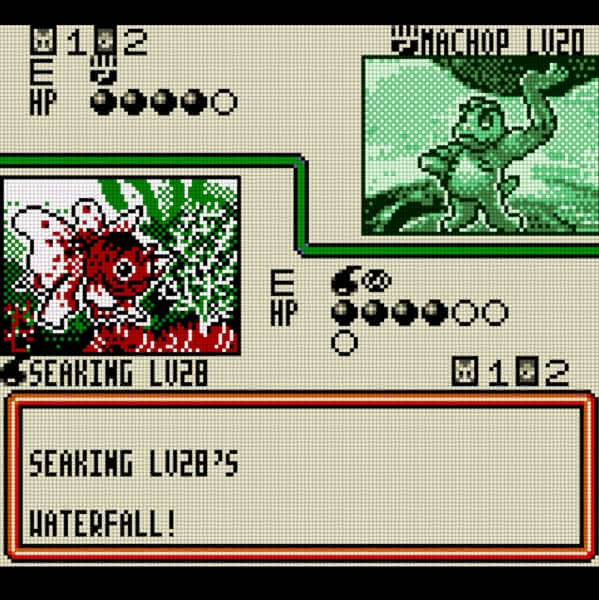
Take that! Dr. Mason did not intervene even though I did not strictly follow his instructions.
(I knew beforehand that this worked and that memory was what inspired me to write this article.)
Why did Dr. Mason allow us to violate his orders on turn 3? I think there are two reasons:
- Using Waterfall instead of Horn Attack leads to the same result; and
- It has no effect on our ability to complete the rest of the tutorial as scripted.
Had Waterfall required us to discard an energy card, Dr. Mason may have stepped in. But it did not, so he looked the other way. I felt so liberated that I compliantly played along with Dr. Mason until turn 7.
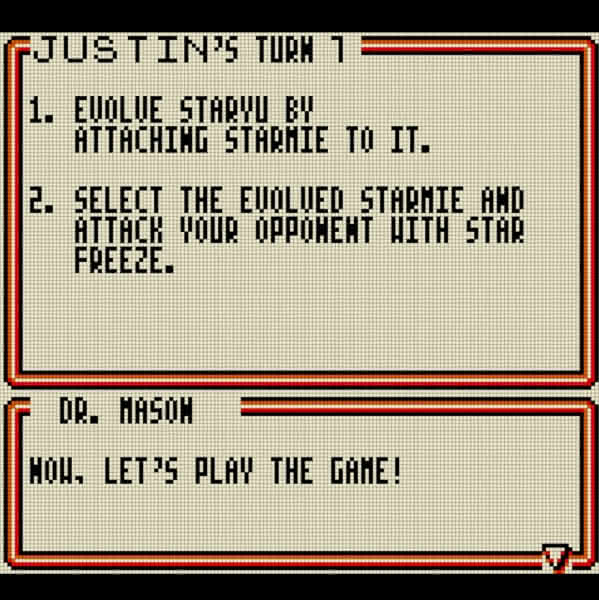
Things have changed dramatically. Our Seaking is long gone and our active Pokémon is the Staryu that was on our bench on turn 3. We have a Starmie card in our hand. Starmie is the evolution of Staryu and it has an attack powerful enough to bring us one step closer to putting the practice duel out of its misery (I mean, of course, winning the very informative practice duel). You would think, having come to the end, I would enthusiastically do whatever Dr. Mason said so I could get on with my journey to become a Pokémon (Trading Card) master.
Not so fast.
Somewhere between turns 3 and 7, I had been ordered by Dr. Mason to place Drowzee, another base Pokémon, on my bench. I had a spare water energy card in my hand. I wondered if Dr. Mason would allow me to attach this energy card to my benched Drowzee for no reason other than spite.
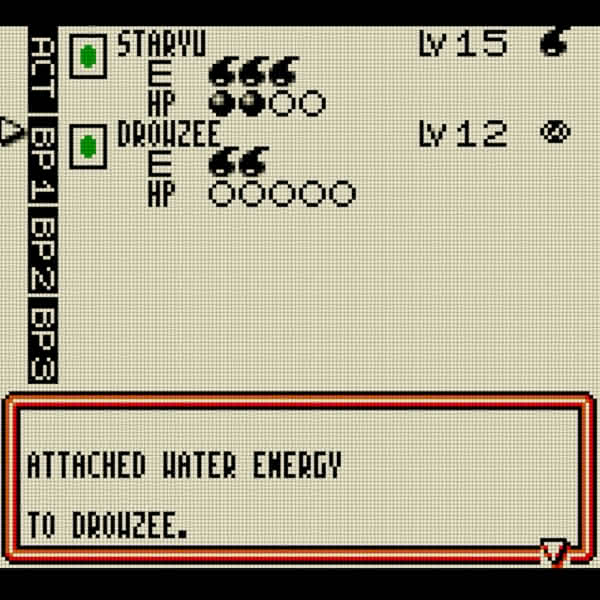
Then we follow Dr. Mason’s orders to evolve Staryu into Starmie and try attacking…
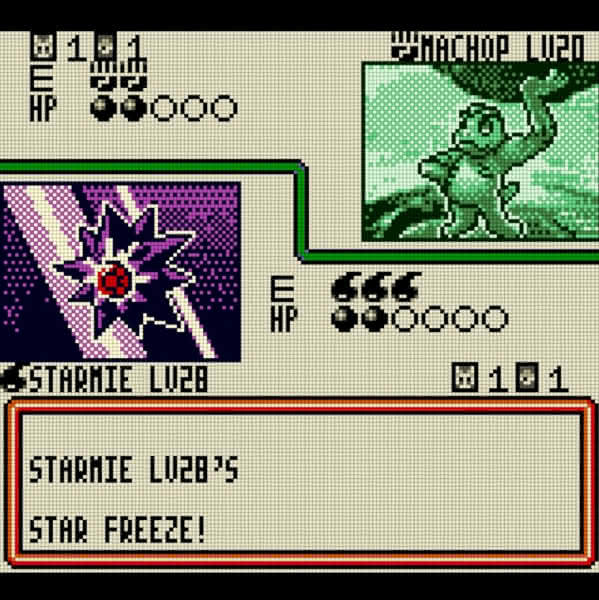
Very interesting! Dr. Mason does not object to my unnecessarily attaching an energy card to Drowzee. What makes this interesting is that unnecessarily playing the energy card could, in theory, alter the script of the duel – which Dr. Mason would not allow. However, because Dr. Mason’s great leap forward will be completed on the next move by Starmie using the energy cards it already has attached, pointlessly attaching an energy card to Drowzee does not change anything. Conversely, Dr. Mason would not allow the player to attach a water energy card to the benched Staryu instead of the active Goldeen on turn one because doing so would change his script in two ways: Goldeen would not be able to attack on turn one and Seaking would not be able to use Waterfall on turn two.
Now for the final turn…
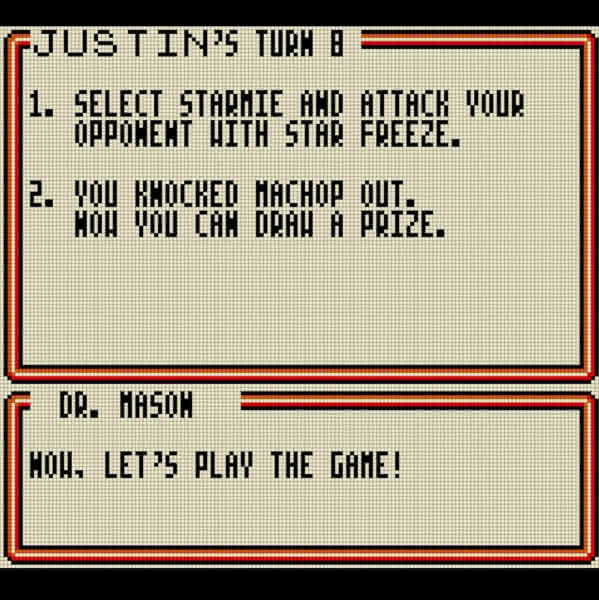
Dr. Mason’s turn 8 instructions are simple. We need only use Star Freeze again to knock out the opposing Machop and win the duel. I once again had an extra water energy card in my hand, so I decided to give it to Starmie. Note this is entirely pointless because there is nothing that Starmie can do with the fourth water energy card.
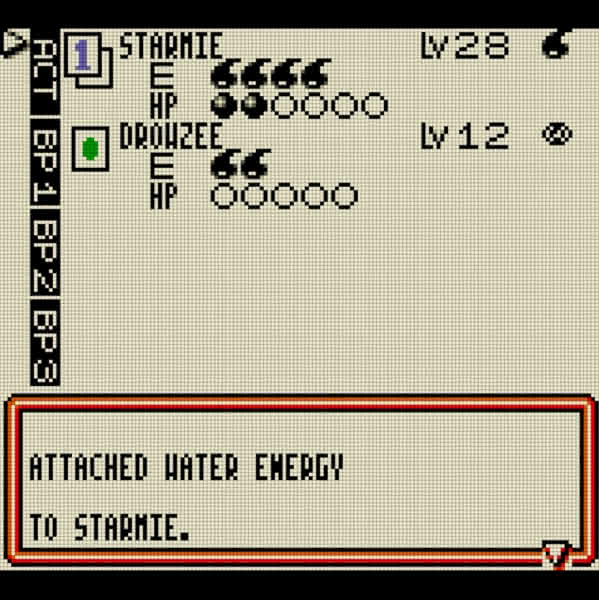
Despite my having again added an unnecessary step to Dr. Mason’s instructions, he allows me to attack and end the duel.
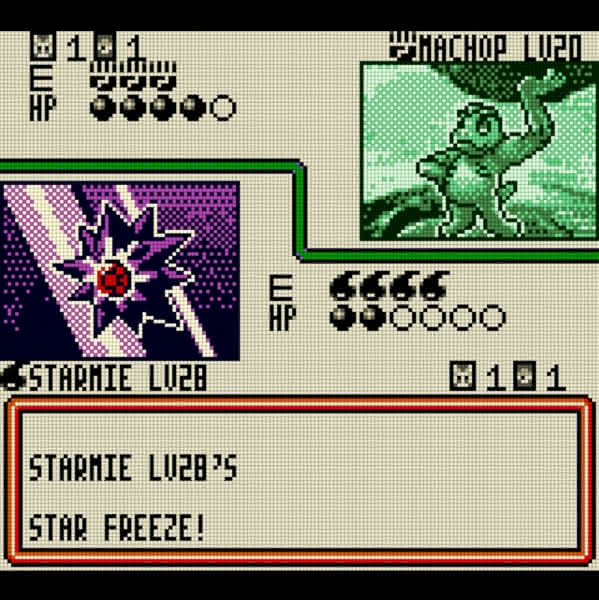
With that, I was able to begin my journey for the legendary Pokémon cards without dear leader’s detailed guidance.
We learned that there are rules for breaking the rules of the tutorial. We are never allowed to deviate from Dr. Mason’s instructions in a way that would make it impossible to follow his explicit instructions. However, we are permitted to add steps to his instructions or, in one case, use a different attack than what he directs, so long as it does not make it impossible for us to otherwise do exactly what he says.
All jokes aside – I reiterate that the tutorial is very good on a technical level. While it is not comprehensive, it demonstrates playing base Pokémon, evolving Pokémon, attaching energy cards, and the win conditions for a duel. Making it eight turns was also reasonable. There are a few additional points it could have addressed within its scope such as demonstrating at least one trainer card, but on the whole it is a good introduction and there is other in-game guidance for concepts beyond those introduced in the mandatory tutorial. My issue – again – is not the tutorial itself, but that it is mandatory. While the developers were correct to operate under the assumption that many, if not most of its audience were not going in with extensive competitive Pokémon card knowledge, it should have made an allowance for those who already knew how to play – either from playing with or reading about real Pokémon cards or from having already played through the Game Boy Color game before starting a new adventure.
Much like another classic Pokémon spin-off title, Pokémon Colosseum, Pokémon Trading Card Game for Game Boy Color holds up very (perhaps surprisingly) well more than a quarter-century after it was first released in Japan. It is well-balanced and, cheating aside, the AI opponents are able to give a decent account of themselves, especially combined with the gradual process the player must go through to build his or her deck. It comes with my recommendation (once you get through the tutorial, that is).